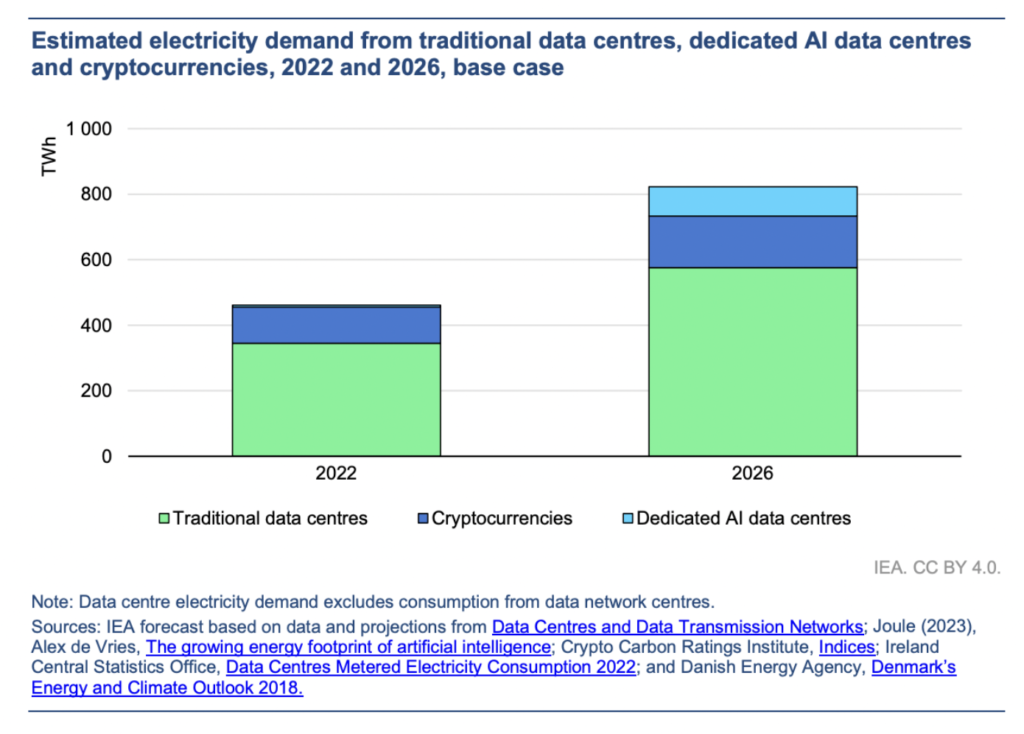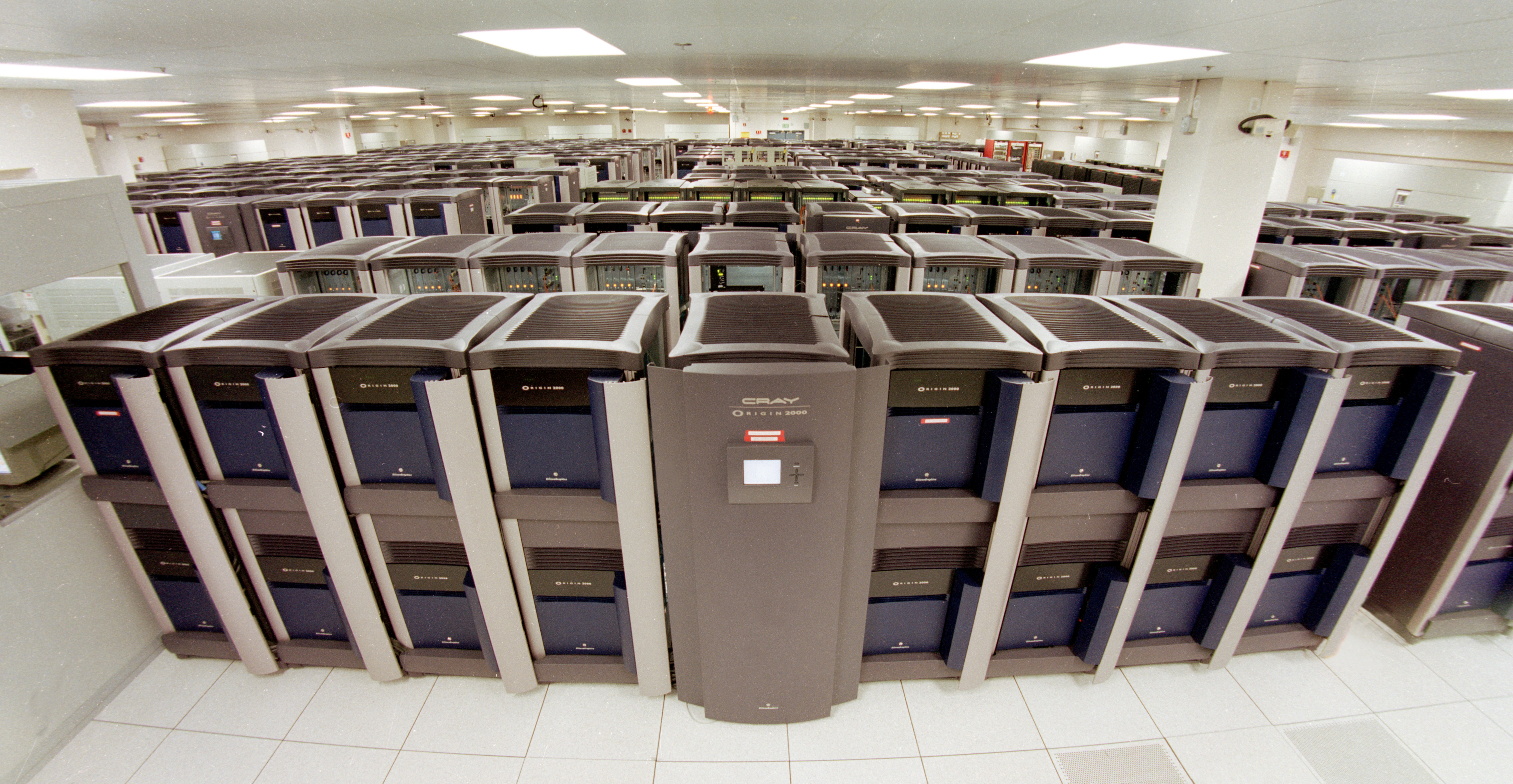AI’s speculated revolution is becoming actualised at a breakneck pace. Big tech companies and industry leaders consistently tout such benefits of AI integration; indeed, AI’s potential offerings have never been so boundless. However, this consensus is not without its complications: dystopian fears are rife, with automation threatening employment and moral questions of AI’s intelligence. As perturbing as the above is, concerns being exclusively ethical, and this digital-centric discourse detracts from the growing, physical issue of AI’s insatiable appetite for electricity – and what the environmental implications of this encompasses.
It all begins with data centres: the backbone of modern internet, and now the heart of AI computing. IEA statistics highlight data centres accounting for 1 percent of global electricity use and (energy-related) greenhouse gas emissions, respectively. This may seem a modest number, but as AI demands unprecedented change to the infrastructure of data centres and digital networks, these figures are on the path to skyrocket.
Most data centres’ server racks currently have an energy density of around 5-10kw. However, to handle AI, an average rack will need at least five times as much energy and, in some instances, upwards of 100 kW per rack. AI is also beginning to be utilised in streamlining the running of, and even designing the data centres themselves, adding another level to energy requirements.
The generative AI algorithms featured in chatbots such as ChatGPT and Google’s Gemini currently bear the brunt of this power demand. A recent paper from researcher Sasha Luccioni and colleagues from Carnegie Mellon University suggests that the generation of a single image may use a staggering 2.907 kWh, drawing a stark comparison to the average 0.012 kWh used to charge a smartphone. With Open AI’s new video generative model Sora on the horizon, it appears the only way is up for chatbots’ power usage, and not in a good way.
Cryptocurrency also deserves a notable mention. The harmony of AI and blockchains has become a common occurrence to maximise mining efficiency. Initially, a lot of mining used smaller, unorthodox setups. But crypto’s rise – and that of CBDCs (governments’ central bank-owned crypto rival) – is seeing data centres amalgamate cryptocurrency alongside other energy-sapping AI perpetrators.
Subsequently, retrofitting existing data centres is, and has been well underway. However, such efforts are already somewhat redundant; the mass construction of larger, AI-specialised data centres will be vital in ensuring AI’s expansion. A recent report from data scientist and researcher Alex De Vries estimates the growth of AI’s energy consumption will translate to the annual energy demand of the Netherlands by 2027.
For an industry already struggling to go green, this is bad news. Pledges have been made by leaders such as Microsoft and Google to achieve carbon neutrality by 2030. Still, they are undercut by Microsoft’s growing interest in nuclear energy and Amazon’s recent 650 million dollar investment into an entirely nuclear-powered data centre.
Issues are not limited to emissions and finite resources either; areas with a high density of data centres will likely experience pressure on local resources and infrastructure. In 2022, 8,000 West London homes were stalled mid-development due to grid limitations. As of today, 3900 of them still await connection. The 100 data centres across zones 1-9 are likely culpable.
Meanwhile, Nigeria’s data centres are suspected to be worsening the pre-existing water crisis that has stricken Sub-Saharan Africa. Water is a necessity for cooling new AI supercomputers and data centres – air cooling is simply not sufficient anymore. Microsoft does not operate within this specific region, but given their water usage surged 34 percent between 2021 and 2022, this hypothesis in Nigeria is rendered all the more plausible and perhaps forecasts similar complications creeping closely behind where new centres appear.
Fortunately, there is still hope to make the AI revolution a sustainable one. Investment and utilisation of HVO (hydrotreated vegetable oil) will aid renewable pledges, and government legislation on data centres will also help prevent cascading emissions. Germany has already intervened this year, whereby at least 50% of data centre energy must be from (unsubsidised) renewables, rising to 100% by 2027.
But we cannot risk complacency. Hope cannot lie solely within tech giants, for smaller organisations will continue to rely on colocation centres that have far less pressure to adhere to sustainability. Likewise, alongside Germany, the US, China and the UK (who together comprise the top 4 countries for data centres) must also act accordingly. Currently, this trio seem to have their heads buried in privacy concerns and discreetly scheme of ways to utilise AI with state functions. But if this data centre conundrum is not addressed, AI’s power-hungry tendencies will undermine any positive development it could bring to humankind.




